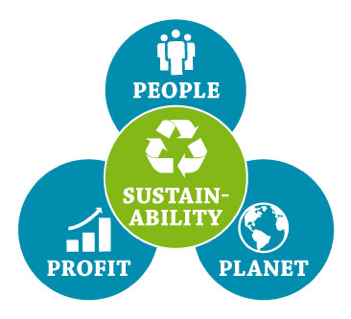How socially responsible is your supply chain?
There is mounting external pressure from customers, investors and shareholders for companies to focus on reducing their energy consumption, eliminating toxic chemicals from products and recycling waste. Sustainability policies are being drawn up, implemented and even published by leading organizations to demonstrate their commitment to protecting the planet.
Going public
82% of the listed Companies on the S&P exchange in the USA publish an annual corporate social responsibility report, also known as a sustainability report. Since 2013 both the level and frequency of reporting have increased each year, now only 18% of companies do not publish a report. Some of the leading sustainability reporting in the UK comes from M&S, Barclays, Unilever and O2. However, the percentage of FTSE 100 companies publishing sustainability reports is lower than the S&P in the USA.
Focusing only on the bottom line at the expense of people and the planet is no longer acceptable to customers and investors who are the lifeblood of any business. A profit-only approach is not sustainable in the long-term.
The three pillars of sustainability
The economic, environmental and social pillars are interdependent and need to work together to achieve sustainability. The ideal scenario is that natural resources within the environment are consumed by humans at a rate at which they are able to replenish themselves.
Supply chains are at the forefront of the opportunities to minimise the negative effects of production and manufacturing. New technologies are available for us to save water, use solar power and recycle waste. If we waste less we are saving money, running cleaner operations and improving working conditions as well as reducing our negative environmental impact.
The Three Ps
The Triple Bottom Line (TBL) is a term that refers to an accounting framework that incorporates three reporting dimensions of performance: social, environmental and financial. The TBL dimensions are also commonly called the three Ps: people, planet and profits. The triple bottom line (TBL) aims to measure the financial, social and environmental performance of an organization over a period of time.
Sustainability is at the intersection of people, planet and profit.

The influence of the consumer
Pressure is coming from customers for us to show evidence of our stewardship of the environment we work and live in. They want to see:
- Fewer carbon emissions that pollute the air
- No toxic chemicals in our personal care products
- Fewer additives in our food
- Simpler reusable packaging
- Less single-use plastics
Consumers are increasingly expecting manufactured products to be made and distributed without negatively impacting the environment and by not depleting natural resources.
According to Nielsen, the market research company, around the world companies have invested time, talent, and effort in social and environmental efforts for a variety of reasons. For many companies, “cause marketing” —the use of social and environmental efforts to build a brand and increase profits—has been a secondary if not primary motivation.
The Coca-Cola Company aims to grow its global juice business significantly by 2020; sustainably sourcing fruit for its juice products is becoming increasingly important. Coca-Cola estimates that it will have reached 54 per cent of its goal to sustainably source its lemon by 2020.
Half of Coca-Cola’s lemon is sourced from Argentina, with 90 per cent of the country’s supply for Coca-Cola sustainably sourced. What they mean by ‘sustainably sourced’ is that farm suppliers meet certain standards set for them, among other things, relating to human and workplace rights, environmental protection, and responsible farming management.
Carbon footprint
Leading companies measure and report their carbon footprint to their stakeholders and use the findings to inform their sustainability strategy and for competitive advantage. An organisational carbon footprint measures greenhouse gas (GHG) emissions from all activities across a company, including energy used in buildings, logistics and company-owned vehicles. Carbon dioxide is the biggest contributor to GHG emissions worldwide.
Carbon footprint can also include indirect emissions from activities outside an organisation’s own operations, e.g. contracted transport. It is usually expressed in tonnes of carbon dioxide (and other emissions such as methane) emitted over a defined period.
Companies that have identified a corporate sustainability strategy and managed to implement it feel that it can offer them a significant competitive advantage in the marketplace. Collaborating with suppliers on sustainability promotes innovation, saves on input costs and limits supply chain risk as well as establishing a great reputation in the market.














